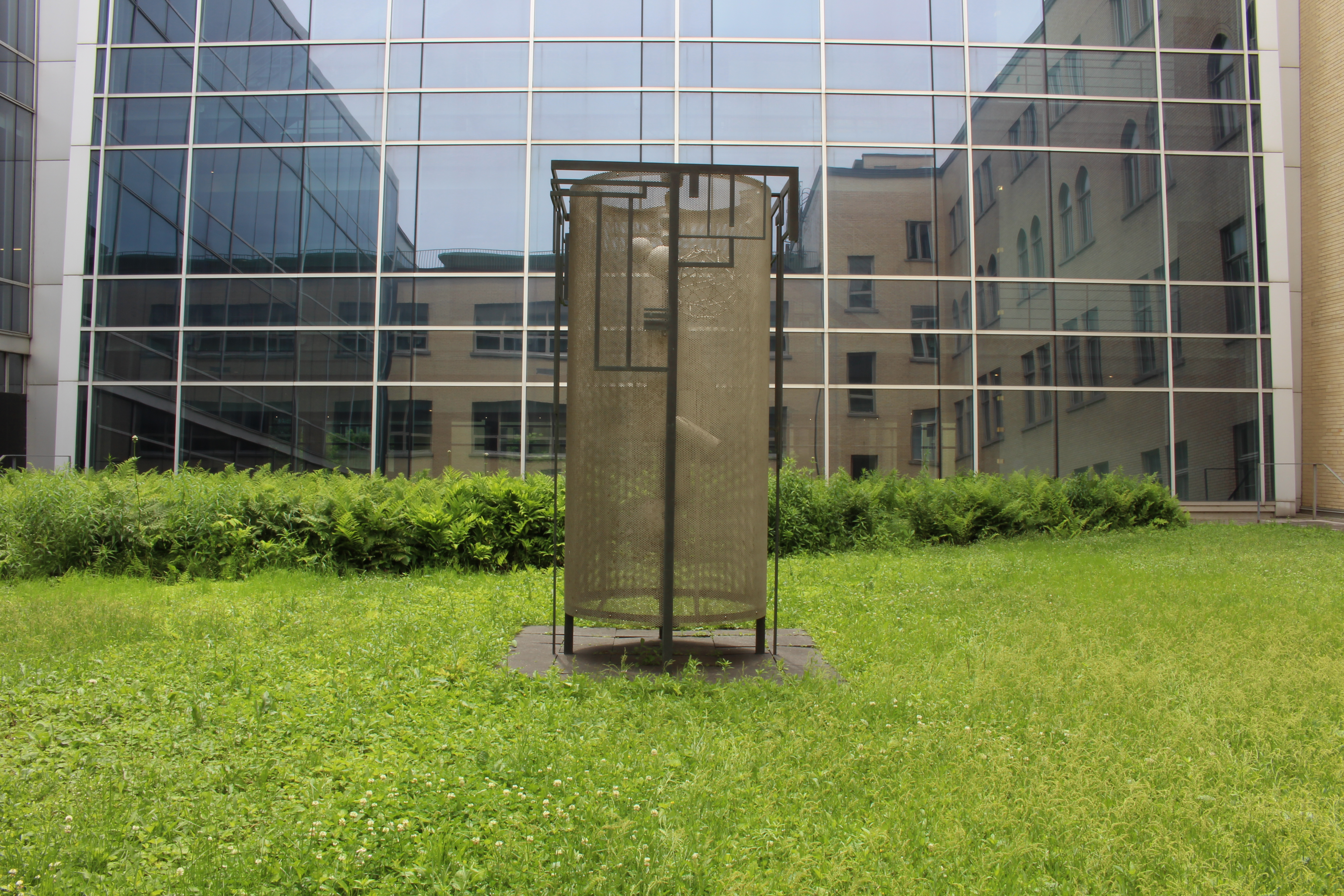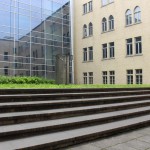

Gilles Mihalcean has been a self-taught sculptor since 1969. Though he spent a bit of time teaching at the Université Laval, he has devoted himself to his art since 1972.
As well as working on monumental pieces for public art projects and to integrate art to architecture, he also regularly presents his work in collective and special exhibitions. Since 1980, he has been one of the major names in the resurgence of sculpture. His work was showcased at the Musée d’art contemporain de Montréal (1988) for contemporary sculpture exhibits and at The Power Plant in Toronto (1988). As a solo artist, his art was showcased in Montreal galleries and art centers (René Blouin, Chantal Boulanger, Roger Bellemare and Circa) as well as Canadian ones (Southern Alberta Art Gallery) and in New York (49th Parallel, Centre for Contemporary Canadian Art). In 1995, the Musée d’art contemporain de Montréal dedicated a retrospective exhibit to him, and was recently on display at the Musée d’art de Joliette (2007).
Mihalcean’s sculptural work is deeply lucid and leads us to more lurid and critical pieces. Time is a fundamental aspect of his art; may it be the time needed by the creator, the time token by the spectator when observing the piece and the time absorbed by history – visible in nearly all his art.
Mihalcean is known for his pieces filled with conceptual dichotomies which lead the observer to reflect. His pieces are often tripartite and the meaning that somebody could find in the close proximity between two elements is often shattered by the third. This principle is supported by the use of contrasting materials and many interrelationships. It also isn’t rare that the artist invite spectators to touch his sculptures and feel them in order to better understand them.

Artwork description
Saint Thomas is a sculpture integrated to the architecture of the Faculté de l’aménagement of the Université de Montréal, once a convent. It was originally built in 1936 and undergone several renovations to enlarge it since then. The last renovation in 1998 earned an award for excellence in architecture and led Gilles Mihalcean’s project
win the competition for the Programme d’intégration des arts à l’architecture et à l’environnement. The artist wanted to reproduce the succession of the barriers which already consisted the space of the courtyard (glass walls, stone staircases, grassy surface) in order to respect the site’s austere character and its aesthetic, which binds the tradition and transparent effects.
It’s a vertical sculpture installed on a granite base and composed of a stack of three layers, that differ from each other by their shape and their materials. The most eccentric part of the piece is the brass grating, handcrafted in the tradition of wrought iron art.
The partition was made to evoke the pavilion’s history as weel as its new architectural plan. A grating formed of perforated stainless steel sheets form the middle part, which in effect decomposes the interior shapes and flattens it like a scanned image, which is animated by the movement of the viewer. The central part, a floating object oscillates in appearance between an anthropomorphic shape and technological one. At night, the sculpture is illuminated from the inside and projects its strange silhouette on the pavilion’s large windows.
Its title categorizes it into Gilles Mihalcean’s religious-themed sculptures. Its theme partly references the biblical figure Thomas as the patron saint of architects and contributes also to establish a symbolic link between the piece and its surroundings: the Université de Montréal’s Faculté de l’aménagement interior courtyard, which houses the École d’architecture. This reference to Thomas was conceived to relate to the piece’s intriguing allure, which casts doubt on what the viewer truly sees and what this grating-fitted structure really encloses. Therefore, this creates a theatrical effect that brings the spectator to truly feel what Thomas did as he felt Christ’s wound. The dual reference evoked in Mihalcean’s Saint Thomas also suggests the importance of doubt in the context of a responsible architectural practice.



